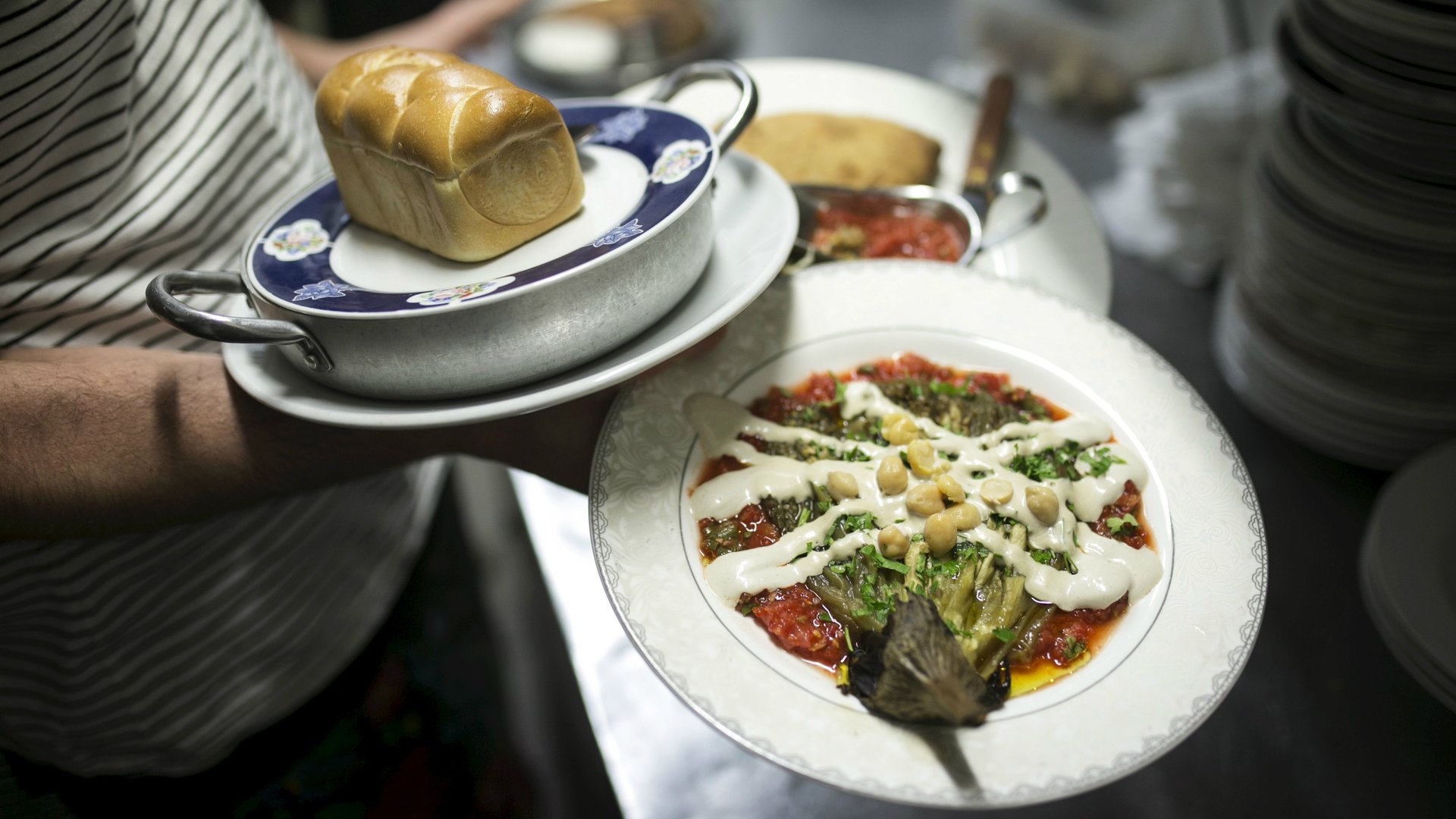How a historian experienced post-election grief and used food to find new purpose
It started as an immersive experiment in food history. For a week, Sarah Lohman ate exactly like an Italian immigrant family living in America in 1919. It ended in tears and personal metamorphosis.


It started as an immersive experiment in food history. For a week, Sarah Lohman ate exactly like an Italian immigrant family living in America in 1919. It ended in tears and personal metamorphosis.
As millions of people across America celebrated the election victory of Republican president-elect Donald Trump, Lohman, a food historian, was among the millions of others who considered Nov. 8 a major national setback. The election struck at her core; uncertainty about her purpose in life bubbled up. She had started her experiment just a day before the election. By the end of her second day—during which her meals consisted of bread, stew, and macaroni with tomato sauce—her writing reflected how deeply she had begun to doubt the impact and net good she was exacting on the world.
“I am afraid,” she wrote, listing off the potential erosion of health care benefits and protections for women, immigrants, African Americans, Muslims and LGBTQ people. “I am afraid we won’t be able to protect each other.”
Speaking by phone from Boston more than a week after the election, Lohman recalled how the election forced her to turn inward.
“I launched this on a Monday thinking it was an innocent enough project to do over the course of a week,” Lohman said, pausing to collect her thoughts. “I didn’t know on Wednesday morning if everything I was doing was frivolous, I just didn’t know what to do.”
Still, she plodded through the week in a blur, sticking to her experiment, grappling through a mental fog.
She would find clarity four days after the election, in Rochester, New York.
The power of the past
Lohman isn’t a fair-weather foodie. For years she has worked to create public programs focused on food for the American Museum of Natural History, the New York Public Library, and others. And in the last five years she’s conducted research for her forthcoming book, Eight Flavors: The Untold Story of American Cuisine.
Much of Lohman’s work has involved studying the culinary traditions of those who don’t look like her or share her language. That experience is accentuated by her food program efforts, which includes working at the Lower East Side Tenement Museum as a tour guide and researcher. It was by brushing up against city history that she discovered Lillian Wald.
In 1893, Wald was teaching a class on home care and hygiene to immigrant women when a child interrupted the lesson to ask for her help. The child led Wald, a nurse, to an apartment in New York City’s scrappy Lower East Side neighborhood. There, she found a woman lying in a dirty bed, covered in blood. The woman had been hemorrhaging for two days following the birth of her child.
The nurse addressed the woman’s bleeding, cleaned the bed, and comforted the family. They kissed Wald’s hands as she exited the apartment.
For Wald—as a lesbian, she was outsider in her own right in that time and place—the moment became a focal point. She described the experience as a true “baptism by fire,” one that altered her worldview and pushed her into a new direction. Within months she and a colleague started the Visiting Nurse Service of New York, providing affordable health care for the residents—many of them immigrants—of the Lower East Side. She wrote about it in her book, The House on Henry Street:

Wald fought for city funding for health care, expanding the reach and depth of services available to people across New York. When she died in 1940 at 73, there was an outpouring of praise from leaders from around the country, including then-president Franklin Delano Roosevelt, who wrote a letter lauding her unselfish labor for those less fortunate.
She was buried in Rochester, at Mount Hope Cemetery, not far from the gravesite of the great American suffragette Susan B. Anthony. A full 76 years later, on Nov. 12, Sarah Lohman pulled her car up to the cemetery an hour before she was scheduled to give a talk at the Domestic Skills Symposium at Gennesee Country Village.
Lohman had anticipated stamping her “I Voted” sticker to Anthony’s headstone—a symbolic gesture to show the progress America had made in electing Democrat Hillary Clinton as its first female president. There was nothing to celebrate though, Lohman stuck her sticker to Anthony’s grave and walked over to Wald’s.
“It made me think about how I am changing in this moment,” Lohman said. “It can’t be left to other people to make the changes, that I have to do my part to make the changes, too.”
Finding meaning in food
Lohman says that upon her visit to Rochester she realized the power food could play in driving the change she wanted.
Everyone eats, and Lohman has found that people of all creeds and colors enjoy asking questions about food—that it’s a medium people are comfortable using to investigate other cultural issues. Employing food and her immersion-style research as a conversation starter, Lohman hopes to focus more of her attention on telling the stories of American immigrant communities.
“I come from that idea that if you want to learn something about someone, you try to walk a mile in their shoes, too,” Lohman said, adding that food is a direct link to history—one that can provide lessons and insight outside of books and partisan messaging.
So she found her mission.
“In America we often accept the food before we accept the immigrant,” Lohman said. “I’m just really now pushing that this book is trying to paint a picture, that we need to expand our thinking about who an American is.”